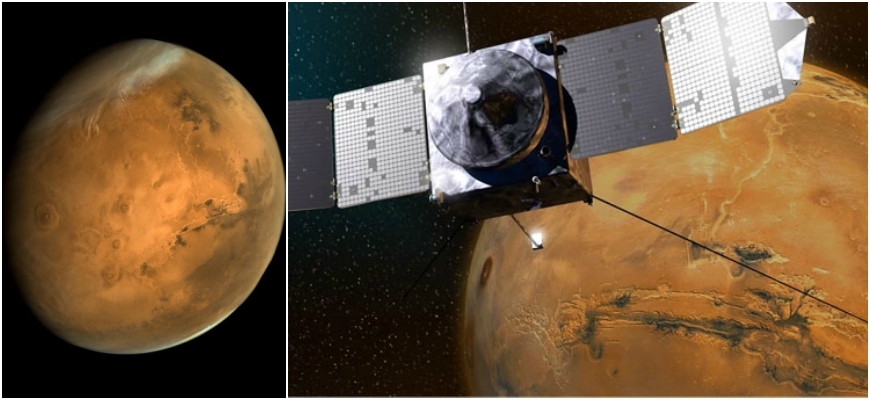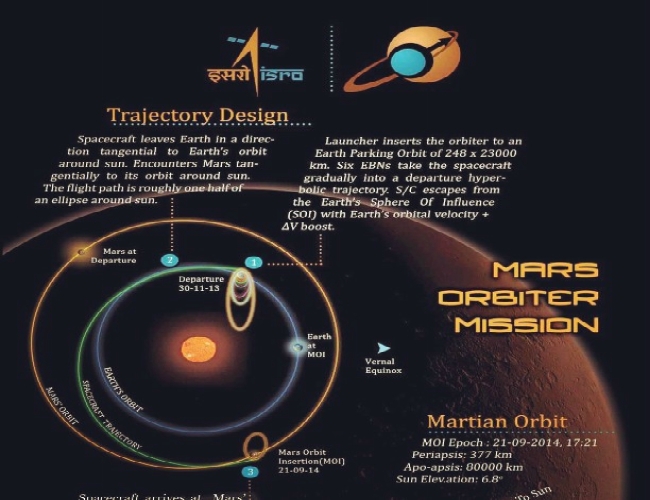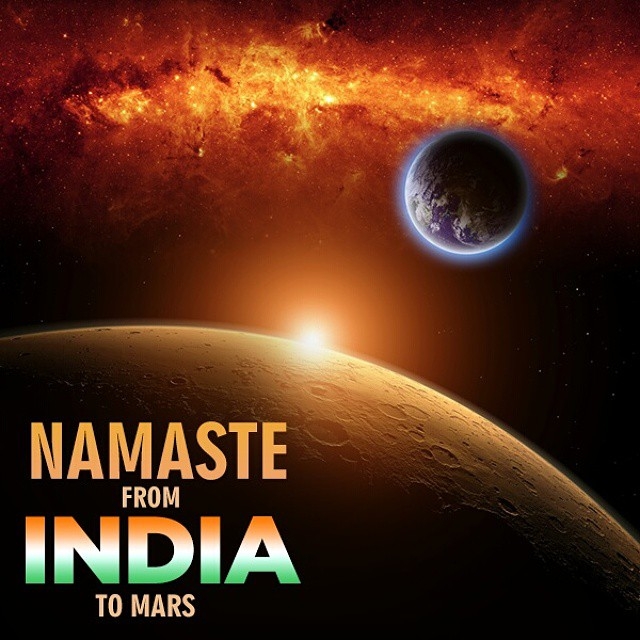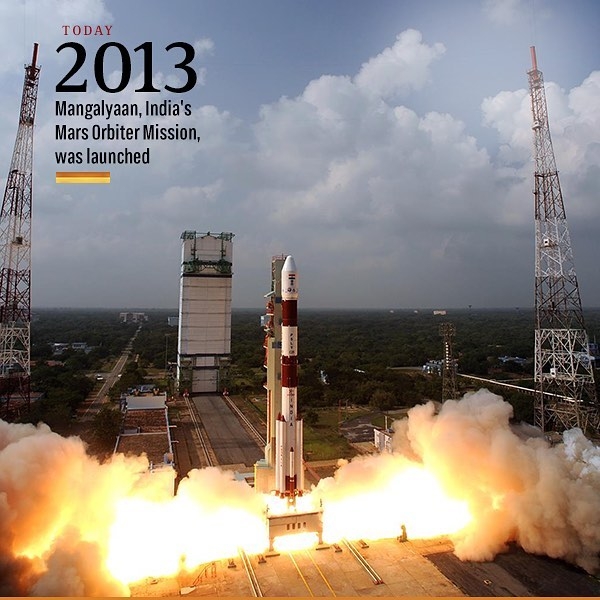Happy Birthday to ‘Mangalyaan’: India’s first kiss to Red Planet completes 4 successful years
Sriharikota, November 5: In the history of space science, India wrote a new chapter on November 5, 2013, when today 'Mangalyaan' was launched from Sriharikota from Andhra Pradesh. What a remarkable examples have been set by Indian Space Research Organization ISRO! Ranging from the successful models like ‘Aryabhatta’, ‘Mangalayaan’, Launching 104 satellites at one go’, till launching heaviest satellite etc. The list goes on and ISRO never fails to make India proud.

The 'Intergovernmental Mission Mangalyaan', sent on November 5, reached the orbit of Mars on September 24, 2014, and with it the first Asian country to reach Mangal orbit and become the first country to reach the first attempt.
Recalling India’s India’s 1st interplanetary expedition – Mars Orbiter Mission (MOM) or Mangalyaan today completed 4 years. Congratulations for this successful mission and wishing the good luck for coming missions. As Mars is one of the closest celestial objects to the Earth it has attracted humans towards itself since the time immemorial. A large number of unmanned orbiters, landers and rovers have been launched to reach Mars since early 1960s.

Earlier MOM or Mangalayaan has been affiliated with many awards and laurels; like in 2015 ‘Space Pioneer Award’ was bagged by MOM, on completion of 1 year ISRO came up with Mars Atlas to mark its anniversary. MOM has bagged many due to its cost-effectiveness, short period of realisation, economical mass-budget, miniaturisation of five heterogeneous science payloads etc.
ISRO Chief AS Kiran Kumar also said earlier that the orbiter, can last several “years” in the Martian orbit. MOM being India’s 1st mission to the Red Planet aims to test key technologies for interplanetary exploration and to use its five science instruments to study the Martian surface and atmosphere from orbit.
The Mars Orbiter Mission (MOM) or Mangalyaan (Hindi for "Mars Craft") is designed to study Mars from orbit. The scientific objectives are to explore Mars' surface features, morphology, mineralogy and atmosphere. To achieve these objectives, the spacecraft is equipped with five scientific instruments and will nominally spend 6-10 months orbiting and making measurements at Mars.

The success of Mars Orbiter Mission has motivated India’s student and research community in a big way. A planetary data analysis workshop was also conducted to strengthen the MOM-AO scientist's research interest. First year data from MOM was released to public on September 24, 2016 through ISSDC website. There are 1381 registered users and 370 Gb data has been downloaded.
The Mars Colour Camera, one of the scientific payloads onboard MOM, has produced more than 715 images so far. Mars Atlas was prepared and made available on ISRO website.
MOM is built with full autonomy to take care of itself for long periods without any ground intervention. Fault Detection, Isolation and Recovery were kept enabled, so as to take care of any contingency on the spacecraft. Master Recovery Sequencer was programmed, to acquire the attitude of the spacecraft and ensure communication with earth even in case of loss of attitude. An orbital manoeuvre was performed on MOM spacecraft to avoid the impending long eclipse duration for the satellite.

The duration of the eclipse would have been as long as 8 hours. As the satellite battery is designed to handle eclipse duration of only about 1 Hour 40 minutes, a longer eclipse would have drained the battery beyond the safe limit. The manoeuvres performed on January 17, 2017 brought down the eclipse duration to zero during this long eclipse period.
The Mangalyaan spacecraft is based on a modified IRS/INSAT/Chandrayaan-1 bus. The main body is a roughly 1.5 m cube constructed of aluminum and composite fiber reinforced plastic sandwich material. Total mass is 1,340 kg, of which 852 kg is fuel. A 1.4 x 1.8 m solar array wing consisting of three panels is mounted on one side of the spacecraft. It can generate 800 W power at Mars and charges a 36 amp-hr lithium-ion battery. The bus is built around a 440 N bi-propellant (monomethyl hydrazine and nitrogen tetroxide) thruster and propellant tanks with 390 liter capacity. Attitude control is achieved by four reaction wheels and eight small thrusters, with knowledge provided by two star sensors, a solar panel Sun sensor, and a coarse analog Sun sensor. Communications are via a 2.2 m S-band high gain antenna, a medium gain antenna, and a low gain antenna.
The science payload has a total mass of 15 kg and comprises five instruments. The Mars Color Camera, the Lyman Alpha Photometer, the Thermal Imaging Spectrometer, the Mars Exospheric Neutral Composition Analyzer, and the Methane Sensor for Mars.